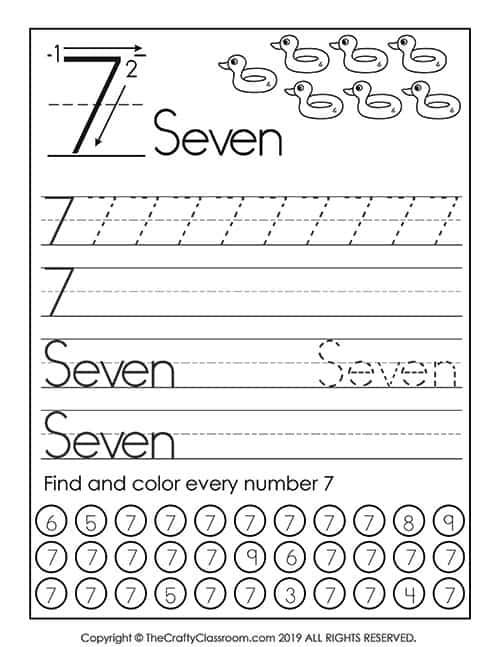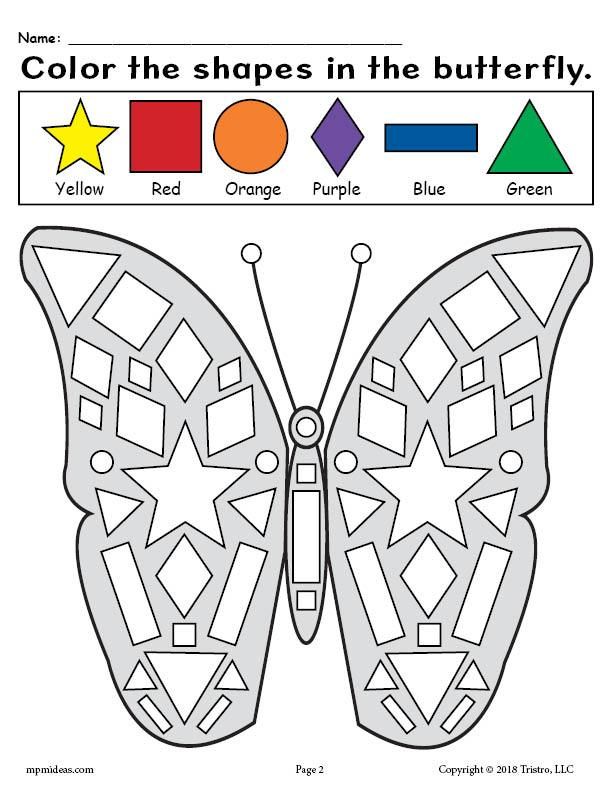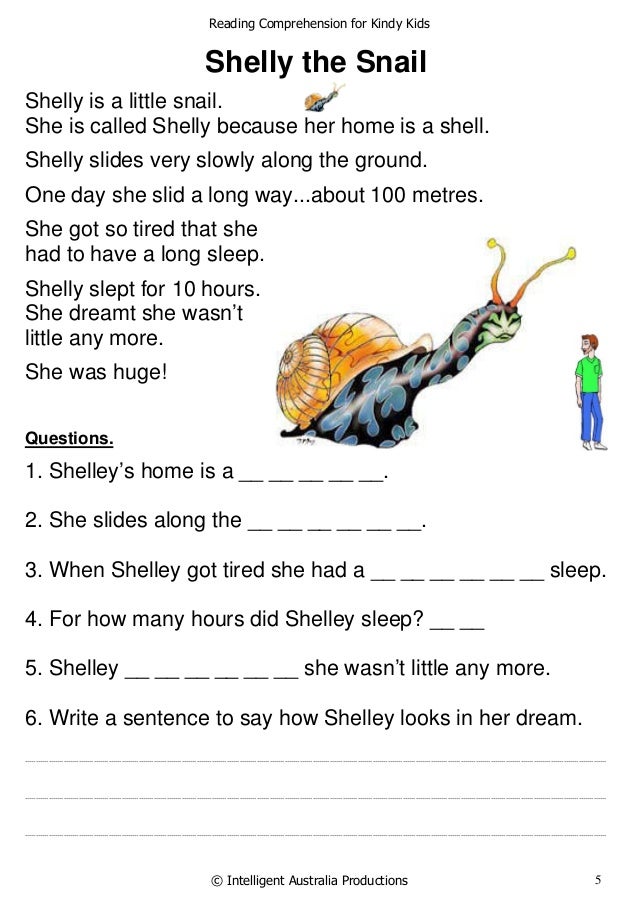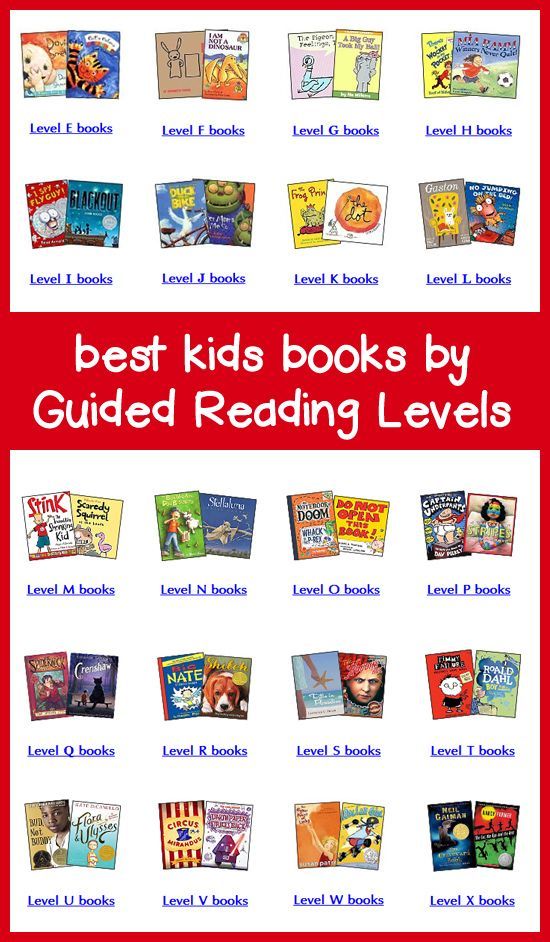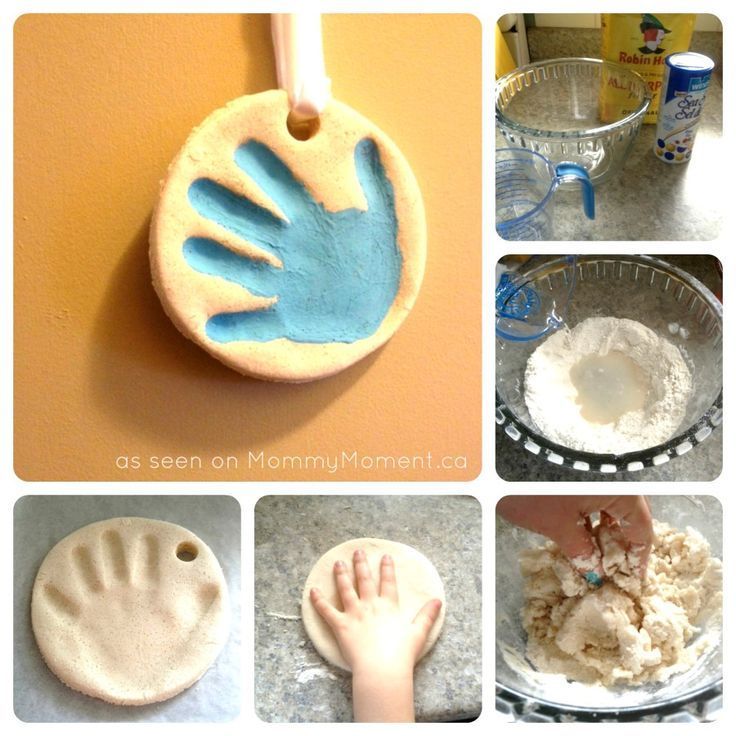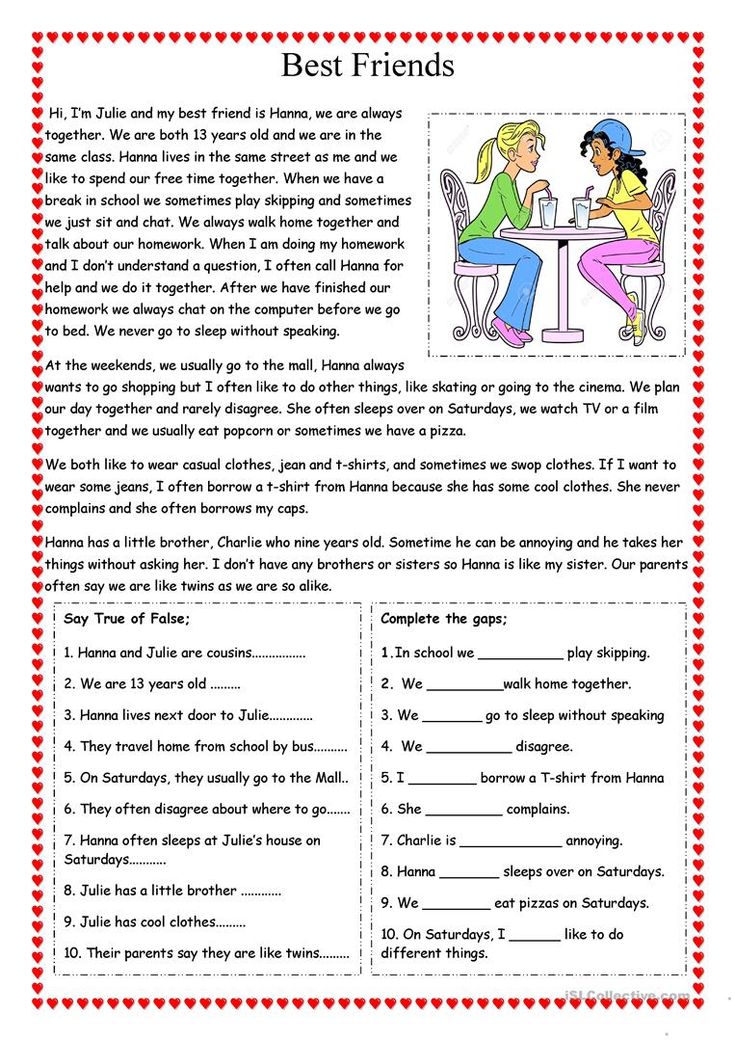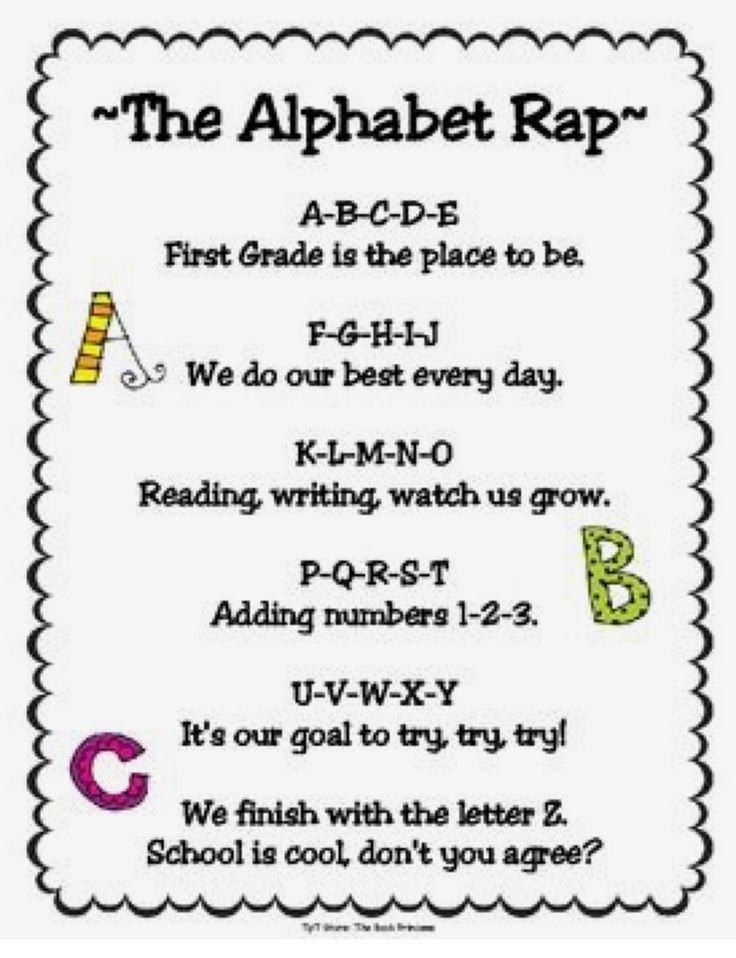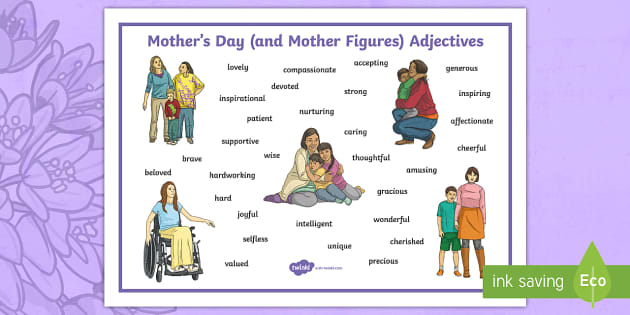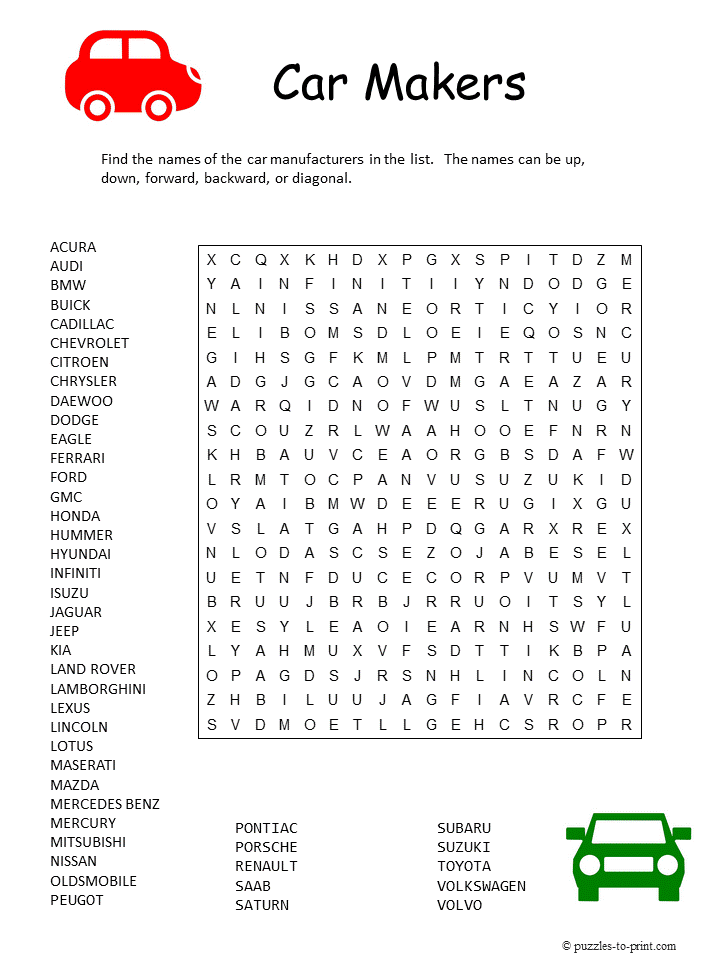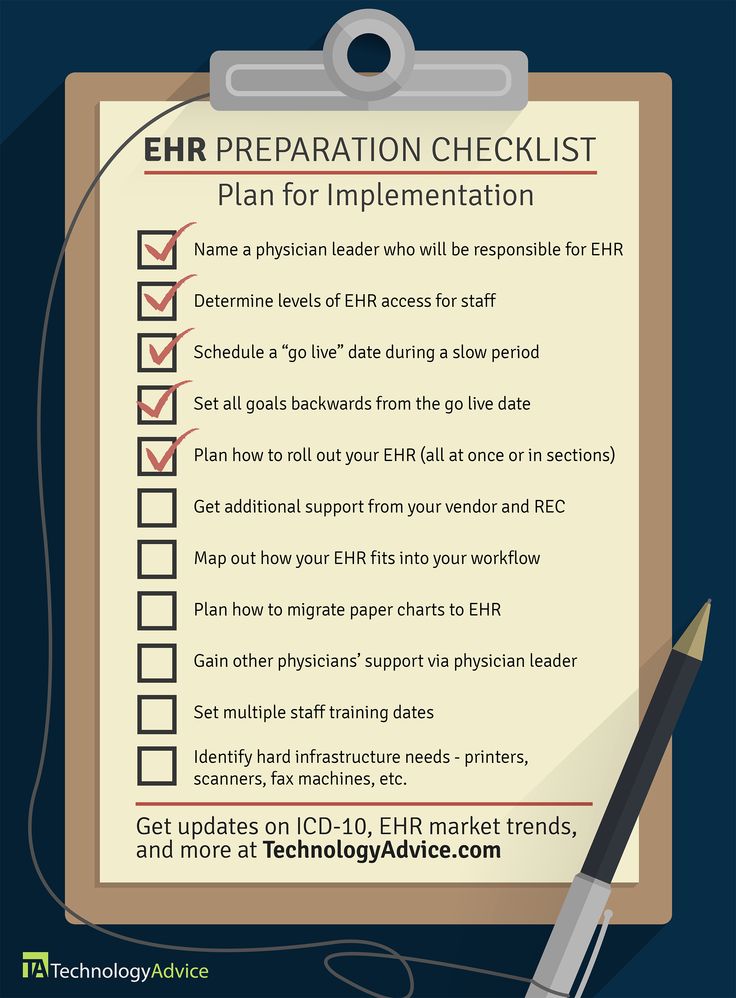Number 7 activities for preschool
27 Number 7 Preschool Activities
Learning how to write numbers and identify them properly is very important because this leads to counting skills. There are many ways of learning numbers. Hands-on math projects are the best method to understand concepts. Here are some activities to help preschoolers learn mathematical concepts and enjoy fun activities.
1. 7 scoops of ice cream!
Children love ice cream on a cone and of course, they can't even imagine 7 scoops. So let's have some fun and in this activity, children will have different flavors of ice cream pre-cut out of card paper in balls. The cones can be made out of brown construction paper. Fun counting game.
Learn More: Adobe
2. Chocolate chips 1,2,3,4,5,6,7!
Mini chocolate chips are so delicious, and even more so when used for counting. First, we have to do all the activities and counting practice, and then we can eat and enjoy those little chocolate morsels that melt in our mouths. For traveling, make the game into a deck of cards.
Learn More: Pinterest
3. Drive along highway 7
Children love to play with small toys and cars. Teachers or parents can help students cut a big number 7 out of black construction paper and make a long road or highway that the cars can drive on. Be creative and with blocks make a real bridge. As they play they count the other 7 cars on the road.
Learn More: Pinterest
4. Ladybug Ladybug flies away.
These adorable paper ladybugs are so popular in preschool and children will enjoy making them and it is a favorite counting activity. Use different mediums for the bug and her spots. They can chant or sing a song while they are doing their craft.
Learn More: Eastcoast Mommy Blog
5. The Rainbow Song
The Rainbow song has Seven colors of the rainbow and instead of singing I can sing a rainbow they can sing, "I can sing 7 colors, can you?" This song is lots of fun in the ASL version too! Students can use colorful markers and construction paper to make this craft.
Learn More: Teacher Luchie
6. 7 worms in my apple!
Preschools love yucky songs, stories, and crafts about insects and worms. So today we have 7 worms in my apple paper plate craft. Great for busy toddlers. The paper plates need 7 precut slits for each worm. The children can count, color, and cut out each worm with assistance. The kids can paint their apples and slowly insert their colorful worms and count them.
Learn More: I Heart Crafty Things
7. Seven Days of the week Bilingual!
When we learn numbers, we need to associate them with things we know like a pair of shoes is 2 or a dozen of eggs are 12 and there are 7 days in the week. So children can count the days of the week and learn them in English and in Spanish! Monday day 1 or Lunes Dia "uno"! Children love calendar lesson plans and help to reinforce many skills.
Learn More: Pinterest
8. Squishy glitter foam number fun.
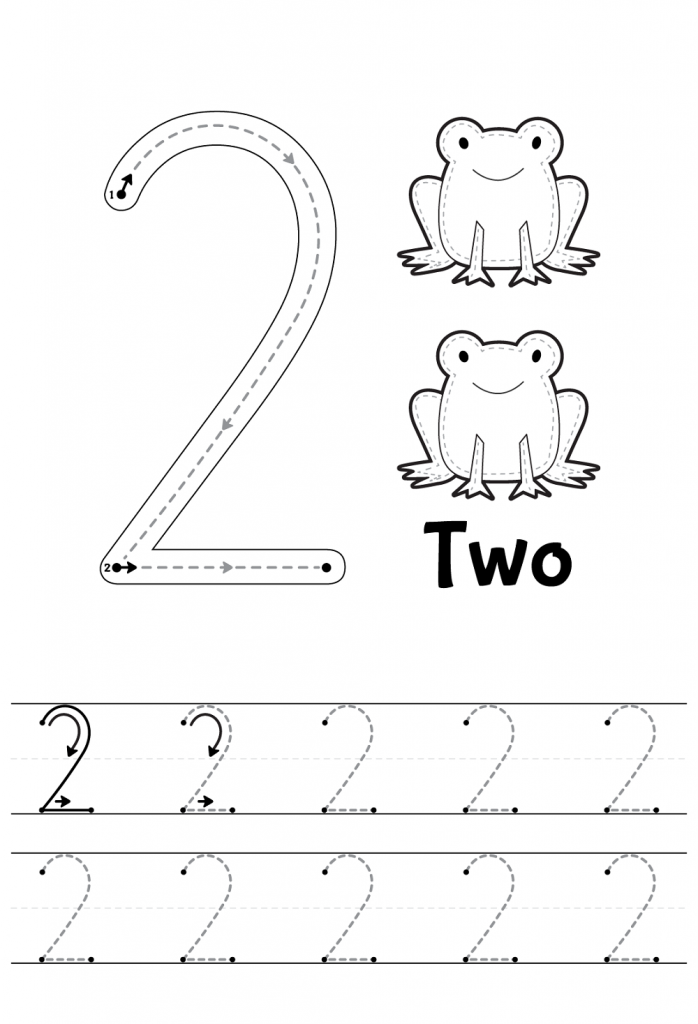
There are a lot of fun number activities you can do with glitter foam. One is to create numbers 1-7 or seven colorful balls for counting. This is a hands-on video for a how-to and children can listen to number songs and make their countable creations. Great motor practice and fun too.
Learn More: Candy Play TV
9. Groovy Button Jewelry
Seven big plastic buttons can be colorful and easy to count. Children can string 7 small buttons and 7 big ones for counting .buttons on a cord or elastic band and you have a fantastic countable bracelet. Big buttons are fun to touch and count, plus they make a nice noise when you shake them.
Learn More: Pinterest
10. Can you see number 7?
Circle the number seven, count the objects and draw or write the number. This site is action-packed to keep busy little ones active and learning. Printable worksheets and low-cost ideas to improve math skills.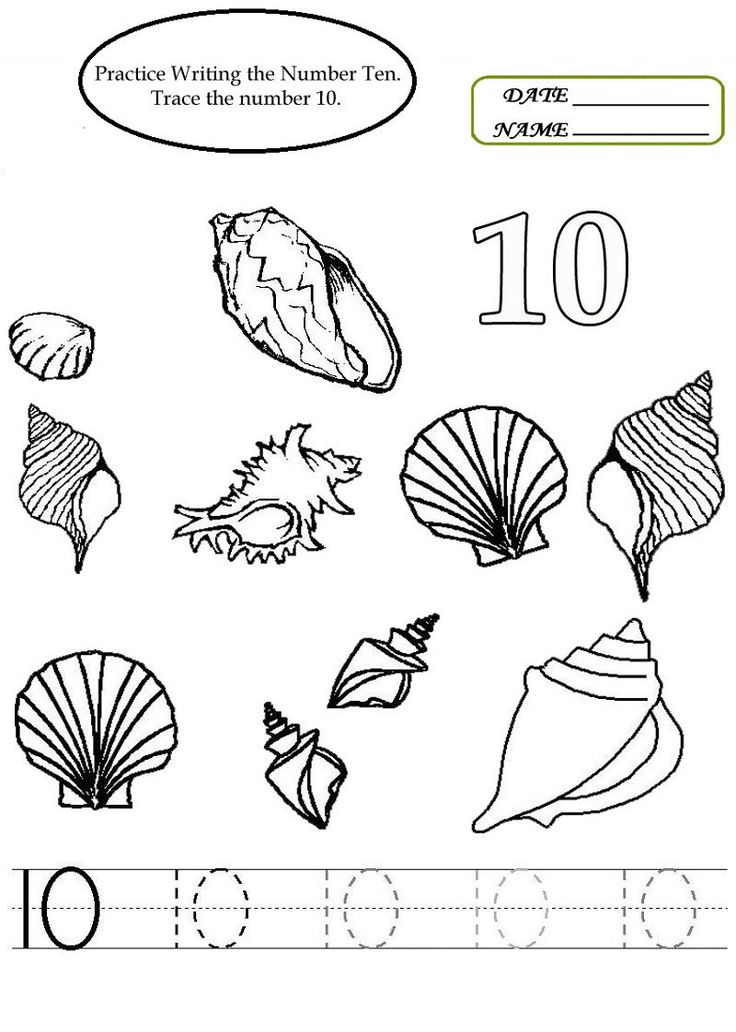
Learn More: Math Only Math
11. Collage Time
Collages are an excellent way to teach preschoolers fine and gross motor skills. With a piece of paper and printable of number 7. Children can take different types of paper: tissue paper, crepe paper, and other materials or abstract items to fill in number 7.
Learn More: Raising Children
12. 7 Falling leaves
When the seasons change what better way for preschoolers to get out and see the leaves turn from green to brown and fall off the tree? Have an outdoor class with some printable papers of number 7 and have children color their trees green and brown and then glue stick 7 brown leaves falling.
Learn More: Red Ted Art
13. Dough counting mats
Play dough is fun to play with and if we can incorporate math concepts into it, even better. Here are some easy-to-make play dough mats and laminate them. You have the numbers 1-10 so children can mold out the number and do some counting activities as well.
Learn More: Life Over CS
14. Fish bowl fun- Counting printable
Children can create a fish bowl with printable worksheets and different types of paper or material and cut out 7 fish, color them and "drop" them in the water. They can make fish food too out of a recycled container and put in 7 "pellets of food" using pom poms for interactive play.
Learn More: Pinterest
15. 7 fingers and one rainbow hand
Children can trace their fingers counting from one to seven on a sheet of paper so that they can see the different amounts. They can color each one in a different color too. This is a very simple counting activity and is good to reinforce math skills.
Learn More: Pinterest
16. Tracing and learning to write numbers
This is a big step. Before children start writing numbers they have to learn what the number 7 means by counting the days of the week. Eggs in a carton, anything where they can count. Then they are ready to practice their fine motor skills and try to write the number. Fun math sheet.
Then they are ready to practice their fine motor skills and try to write the number. Fun math sheet.
Learn More: About Preschool
17. 2 silly monsters learn the number 7
This is a fun math lesson and educational video where children can follow along and shout out the correct answer. Entertaining, witty and kids enjoy the puppetry. Numba and friends are here to guide your preschoolers through this fun filled, hands-on activity.
Learn More: Toy Time TV
18. Counting Clouds
Children practice counting with this experience. The texture of cotton balls and sticking them onto the clouds with the corresponding cloud is amazing. Just draw the 7 clouds onto construction paper and write numbers 1-7 on each and have them count the cotton balls and place them accordingly.
Learn More: Facebook
19. DIY turtle homemade puzzle & Fun math crafts
Turtles have cool shells and some turtles have shells that are super for counting.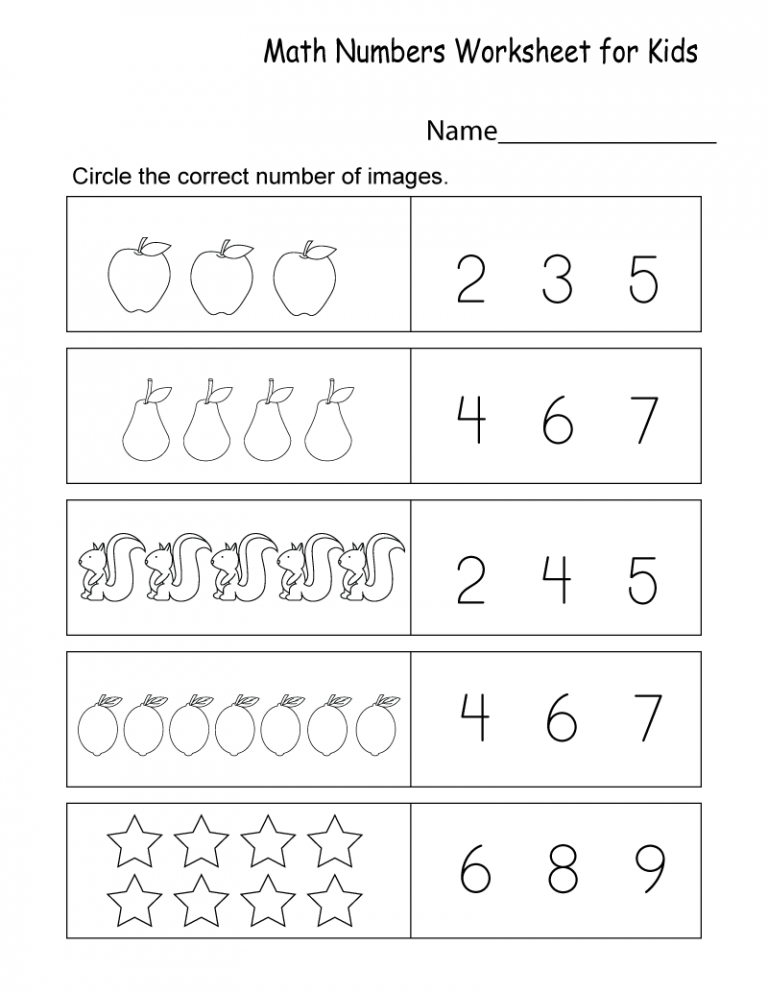 Have preschoolers make their own turtle and practice counting and child number recognition. Using recycled materials they can easily make a cool turtle.
Have preschoolers make their own turtle and practice counting and child number recognition. Using recycled materials they can easily make a cool turtle.
Learn More: MBS Activity Room
20. Dot to dot
Dot to dots is the perfect way for toddlers to develop their fine motor skills. Follow the dots numbers 1-10. These activities are important to learn pre-writing and patience. They can use different colors to connect the numbers.
Learn More: Connect The Dots 101
21. Dot sticker madness!
Dot stickers are addicting and children love to peel and stick them accordingly to fill in the space or to create pictures. You can use so many worksheets for counting or printable numbers, the ideas are endless. Sticking dots in a row or completing an image with dots!
Learn More: Happy Tot Shelf
22. Inspired by Kinder Number 7
This site has an interactive video where children listen, watch, speak and write.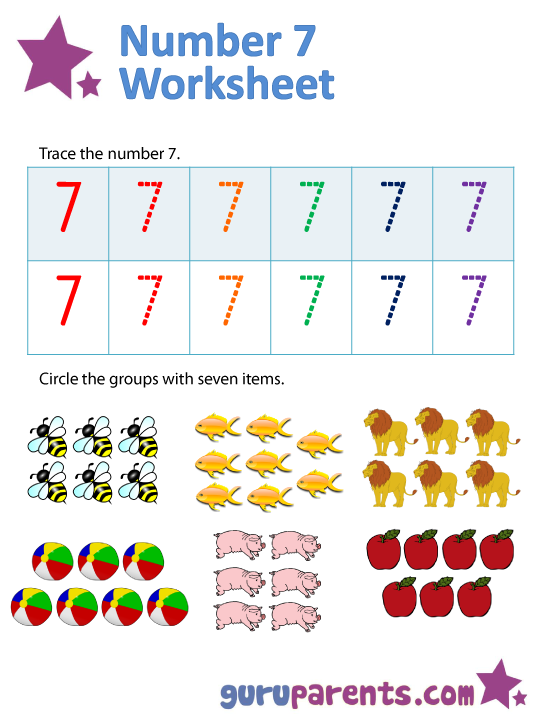 Fun to follow along instructions and they will keep busy with number 7 the story time video. Great resources for math and sciences too.
Fun to follow along instructions and they will keep busy with number 7 the story time video. Great resources for math and sciences too.
Learn More: Inspired by Kinder
23. Hi Ho Cherry-O and Fun Math Games
Hi Ho Cherry O board game, brings back many fond memories and nostalgia. Each child needs a cardboard tree cut out of holes for the cherries, and a bowl of red pom poms to represent the cherries on the tree. The pom poms can be in a brown paper cup to represent the basket. Children use the spinner for numbers 1 2 or 3 or the dog eats one cherries, or you have spilled all your apples and lose a turn. The objective is to get 7 cherries on the tree.
Learn More: Pinterest
24. Where do I live?
Preschoolers can learn at a young age to recognize maps and places. The seven continents coloring sheet is a great way for them to be exposed not only to the number 7 but the continents as well. Follow up with videos.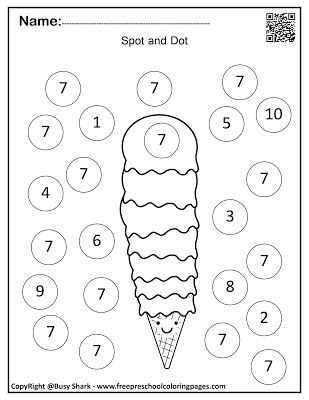
Learn More: Pinterest
25. Nature time for preschool and Kindergarten
Let's connect with nature. Take kindergarten children out to the park or a natural area and collect a basket of flowers, sticks, stones, and leaves. Once they have come back from their nature walk, they can match the number to their things. Don't forget to collect 7 stones!
Learn More: Growing Hands On Kids
26. Counting shapes
Children are drawn to colorful shapes and these activities for preschool children are essential. Students can put the different forms in a row and then count them.
Learn More: The Teaching Aunt
27. Bottle cap counting and memory game
We have to teach children to use and recycle. This is a great memory game and counting activity with bottle caps that we throw out daily. Use the caps, put the image or number inside the cap and let's play.
Learn More: Pinterest
Number 7 Activities: Games and Printables to Build Number Sense
Family and Child Development Lab-Becky Cothern
2. 7k Followers
7k Followers
Also included in
Growing Mega-Bundle of Math Activities for Kindergarten (Entire Year)
Are you looking for resources to cover everything in math for the entire year? This is a complete bundle of Kindergarten Math resources contain lessons, activities, centers, printables, and games to teach all the standards in the area of mathematics for kindergarten. Every year this bundle grows as
54
Products
$120.00Price $120.00$181.00Original Price $181.00Save $61.00
View Bundle
0-10 Number Activities Bundle Distance Learning
Get activities to teach and practice every number from 0-10. Each math packet has 20 different activities, games, and printables to help students master the numeral, quantity, number word, and number sense of the given number. This math bundle is perfect for preschool and kindergarten to learn numb
14
Products
$25.
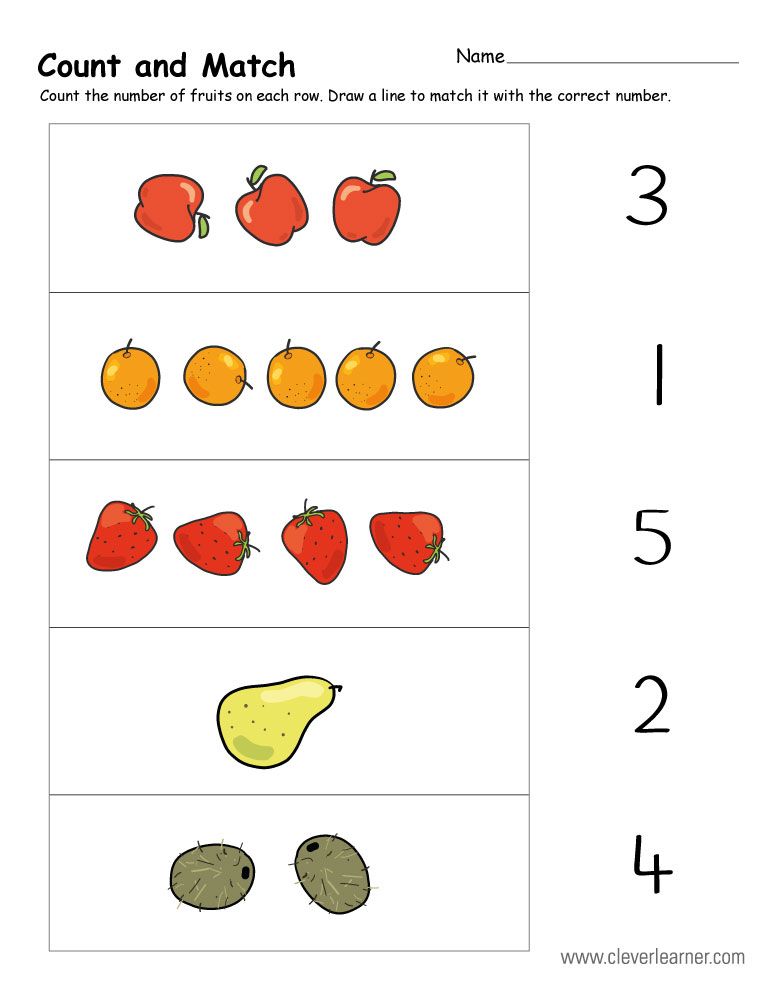 00Price $25.00$44.00Original Price $44.00Save $19.00
00Price $25.00$44.00Original Price $44.00Save $19.00View Bundle
Essential Preschool Basic Skills Bundle #DistanceLearning
Alphabet Letters and Numbers 0-10 are essential to every preschool curriculum. During this pandemic schooling has transitioned into distance learning and parents need to focus on the basic skills necessary for each age. In preschool, these basic skills are alphabet letters and numbers. This bundle b
40
Products
$80.00Price $80.00$148.00Original Price $148.00Save $68.00
View Bundle
Description
Standards
10
Reviews
Q&A
More fromFamily and Child Development Lab-Becky CothernThis product contains 20 different activities to learn the Number 7. These activities are perfect for kindergarten math lessons or preschool math centers. Build Number Sense one number at a time using fun, engaging, hands-on games, activities, and printables.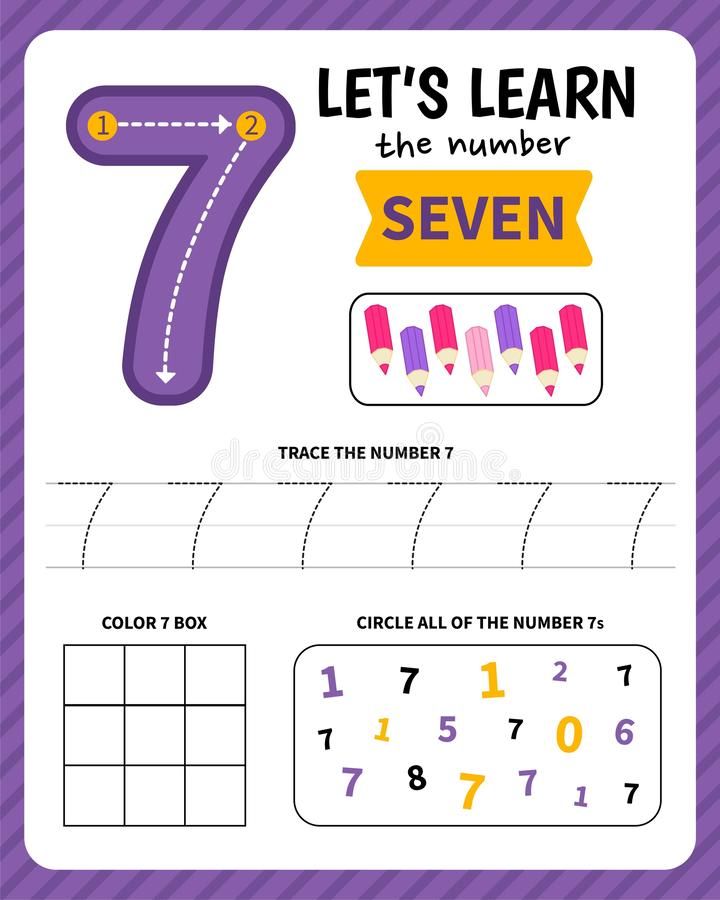 Research shows that students learn best through repetition and play. With 20 different ways to learn counting, number representation, numeral, number word, composing and decomposing, identification fluency, number order, and quantity in fun ways students will master all their numbers in meaningful ways. This product is perfect for preschool, pre-k, and kindergarten intervention.
Research shows that students learn best through repetition and play. With 20 different ways to learn counting, number representation, numeral, number word, composing and decomposing, identification fluency, number order, and quantity in fun ways students will master all their numbers in meaningful ways. This product is perfect for preschool, pre-k, and kindergarten intervention.
The 20 different Number Activities included in this product are:
* Number 7 Identifying Puzzle
* Spell the Number 7
* Number 7 Lacing
* Number Representation Clip Card for #7
* Number 7 Mystery Picture
* Number 7 Maze
* Number 7 Counting Coloring Page
* Play-dough Mat
* Number 7 Writing Worksheet
* Compose and Decompose the Number
* Number of the Day Focus Sheet
* Number 7 Poster
* Number 7 Fluency Sheet
* Number 7 Bracelet
* Pocket Chart Sorting Cards
* Number 7 Action Cards
* Number Monster Game
* Find the Number 7's
* Number Representation Bingo Dotter
* My Number 7 Book
If you are looking for additional activities for numbers try some of these links:
Number Sense Strips
Ordinal Numbers with Pizza
Number Bond Flashcards
Identifying Numbers 0-20
Counting Activities
Try saving $$$ with the GROWING-BUNDLE of Kindergarten Math Curriculum and get ALL my Math products CLICK HERE TO SAVE
CCSSK.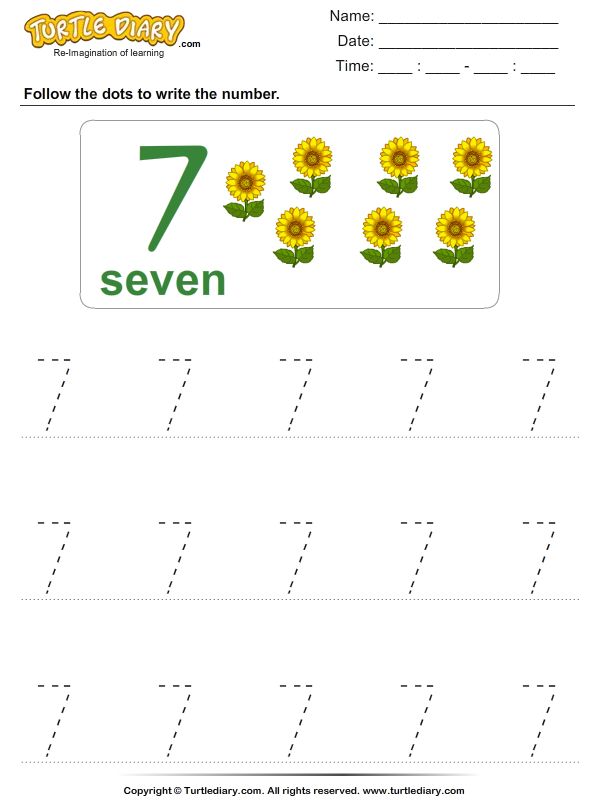 CC.A.1
CC.A.1
Count to 100 by ones and by tens.
CCSSK.OA.A.3
Decompose numbers less than or equal to 10 into pairs in more than one way, e.g., by using objects or drawings, and record each decomposition by a drawing or equation (e.g., 5 = 2 + 3 and 5 = 4 + 1).
CCSSK.OA.A.4
For any number from 1 to 9, find the number that makes 10 when added to the given number, e.g., by using objects or drawings, and record the answer with a drawing or equation.
CCSSK.CC.A.2
Count forward beginning from a given number within the known sequence (instead of having to begin at 1).
CCSSK.CC.A.3
Write numbers from 0 to 20. Represent a number of objects with a written numeral 0-20 (with 0 representing a count of no objects).
Questions & Answers
summary of the lesson for children 6-7 years old "My helpers-sense organs" | Outline on the topic:
Municipal Autonomous Institution
additional education
"Center for Children's Creativity" of the Industrial District
program "The World Around Us")
Prepared by: Suslikova Marina Vladimirovna
Teacher of additional education
of the first qualification category
Orenburg 2017
Explanatory note.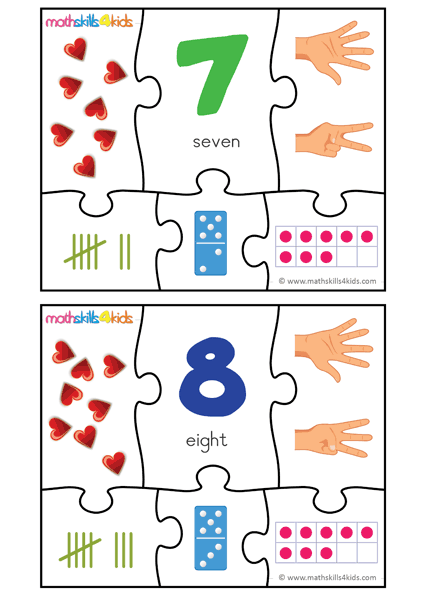
Lesson on the program "The World Around Us" on the topic "My helpers-sensory organs" is designed for preschoolers 6-7 years old. This lesson is recommended to be held in the middle of the year, when, under the program “The World Around Us”, children get acquainted with the block of topics “Man. The internal and external structure of man.
The lesson is based on an activity approach that forms universal learning activities. This lesson contributes to the development of students' initial research skills, stimulates cognitive interest through a variety of tasks.
In order to make the lesson more emotional, the teacher introduces a surprise moment with the arrival of a man who has no sense organs, the children, together with the teacher, determine the problem that needs to be solved in the course of work in the lesson, set the goal of the lesson.
During the lesson, preschoolers experimentally perform various tasks, in the course of which they get acquainted with the sense organs, determine their role and significance in human life.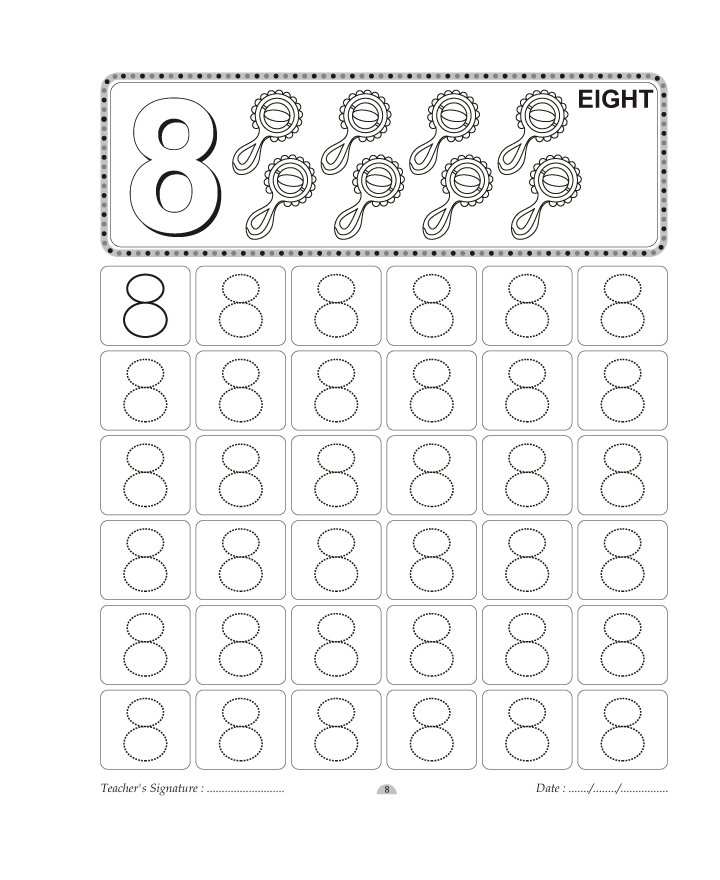 In the process of working on assignments, children help the little man acquire sense organs.
In the process of working on assignments, children help the little man acquire sense organs.
A physical education session is held with the children, which helps them repeat and memorize the senses again.
During the lesson, children make a conclusion about the importance of the senses in human life.
At the end of the lesson, the children share their impressions, telling what they liked the most about the lesson.
Theme: "My helpers are the sense organs"
Purpose: to introduce children to the human senses.
Tasks:
- Introduce the concept of "sense organs"
- Strengthen the ability to name the senses
- Educate children to work in pairs together, respecting the opinions of other children.
- Develop interest in research activities while performing experimental and practical activities.
Equipment: drawing of a man, disposable cups of sweet and plain water, orange, pen, eraser, pencil, chalk.
Form of work: frontal, group
Lesson plan:
1.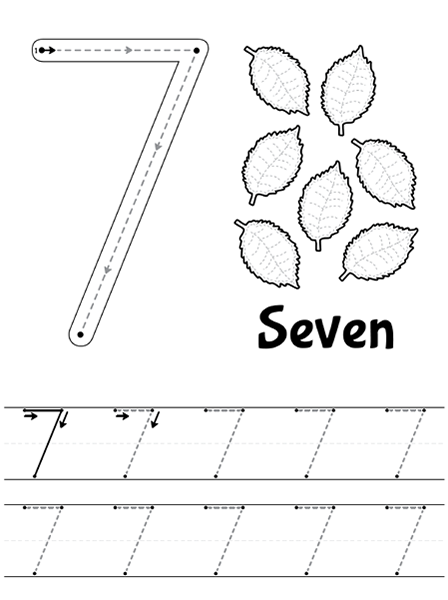 Introductory part: Surprise moment: the arrival of a man without sense organs to class. Determining the topic and purpose of the lesson, highlighting the problem, discussing the way out of the problem situation. 1 min
Introductory part: Surprise moment: the arrival of a man without sense organs to class. Determining the topic and purpose of the lesson, highlighting the problem, discussing the way out of the problem situation. 1 min
2. Main part: Experimental-practical activity, performance of tasks, finding sense organs for a little man. Phys. minute "Sense Organs". Checking the correctness of the performance and evaluation of their work. 22 min
3. Summary of the lesson: Talk with the children about what they liked most about the lesson. What is more memorable. 2min
Course of the lesson
1. Introductory part:
Teacher: Hello guys, I am glad to welcome you to our lesson!
- Today we have an unusual lesson about the world around us. We will be researchers.
- Guys, do you know who the researchers are?
Children: These are people who discover something new, explore something.
Teacher: But before I start, I would like to introduce you to one interesting little man.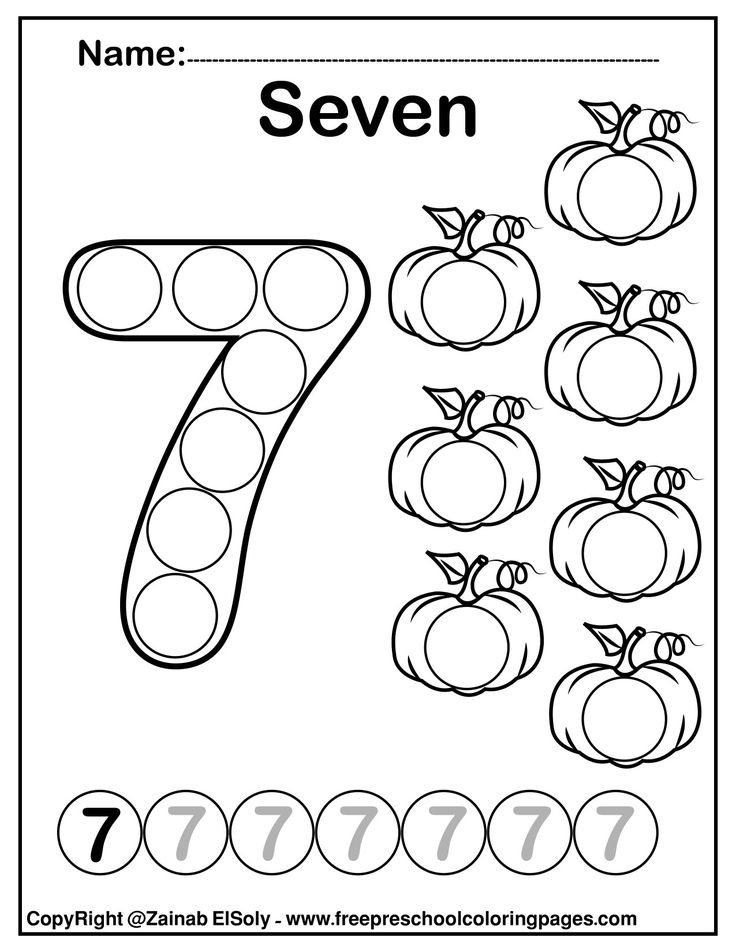
- Tell me, what is unusual about it? Why is he interesting?
Children: This man has no face. He has no ears, eyes, mouth, nose, hands
Teacher: How, in one word, can we call these parts of the face? (Sense Organs)
- What do you think the topic of our today's lesson will sound like?
Children: Sense organs.
Teacher: Or rather, “Our helpers are the sense organs”
- At the end of the lesson, you will answer the question for me:
Why are the sense organs called our helpers?
- Let's formulate together the goals of today's lesson:
Get to know ...... (sense organs)
Learn .... (what they are for)
- Guys, what do you think we can do with the little man, can we help him somehow? What task would you suggest doing with a little man?
Children: help to get the senses.
Teacher: That's right, in the course of work we will help our hero acquire sense organs.
2. Main part:
Teacher: And so, let's start work, only after completing all the tasks we will help the little man transform all his senses.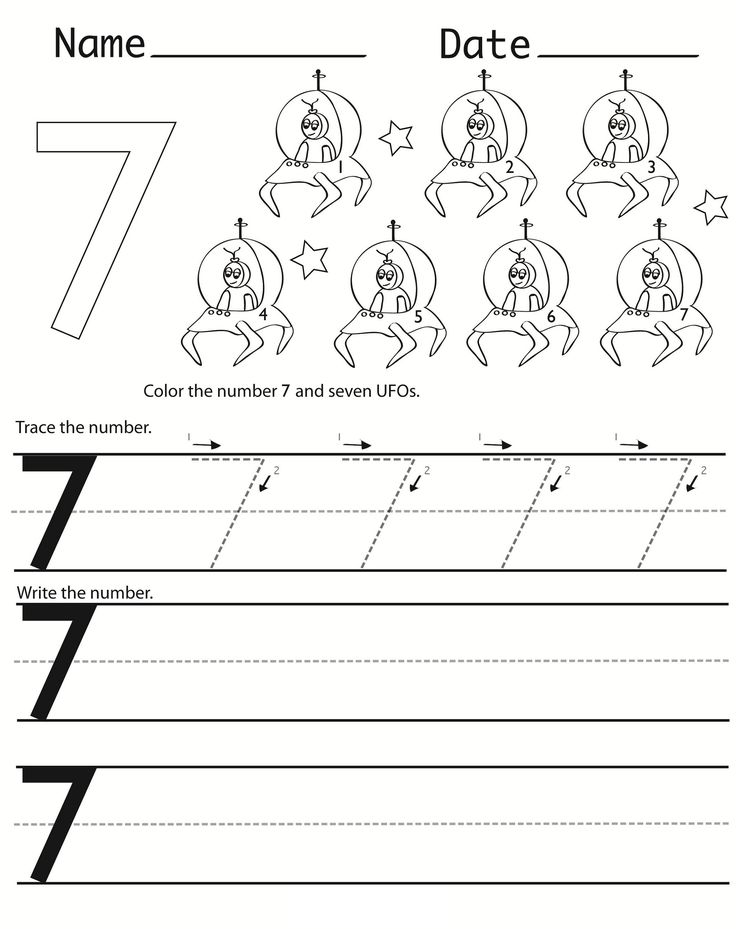
After completing the task, you must analyze your work, say which sense organ helped you complete the task.
I propose to work today in groups.
Task for group 1: Look at the picture, say what task you need to complete, complete this task. (find the difference between two clowns)
Task for group 2: with closed eyes, determine which objects make sounds (listen to sounds (rain, wind)).
Task for group 3: determine what kind of water is in the glasses (there is water in the glasses, one is sweet, the other is plain)
Task for group 4: there are objects in the box, identify them by touch.
Task for the 5th group: with closed eyes, determine by smell what is on the plate.
Group 1 performs.
Our group had a task…
Helped us to complete it….
Teacher: With the help of the eyes we learn the beauty of the world around us, we see all the objects that surround us. With its help, we get the most information about the world around us.
- You did a good job.
- Help our hero to see the beauty of the starry sky, attach the little man's eyes
Group 2 performs.
Our group had a task…
To accomplish it, the language helped us…
Teacher: What helped you determine the taste of water? (language)
- Well done. They did the job correctly.
- Let's help our hero feel the taste of ripe fruit, let's attach the tongue to the little man.
- Well, now let's have a little rest.
Phys. minute.
One head was given to us,
And two eyes
And two ears,
And two temples, and two cheeks,
And two legs, and two arms.
But one nose and mouth.
And if we were, on the contrary,
One leg, one arm,
But two mouths, two tongues,
If only we knew,
What we ate and chatted!
Group 3 performs. Our group had a task…
To complete it, he helped us…….
Scientific name - ….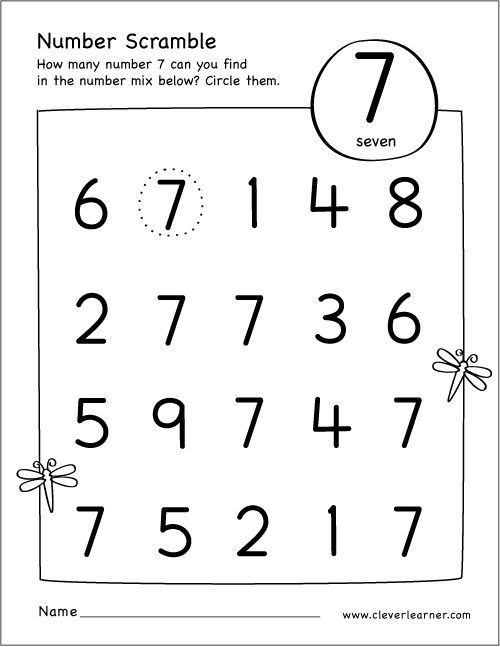
Teacher: What helped you determine the contents of the jars? (nose)
- A person's ability to distinguish smells is called smell. The nose is the organ of smell.
- Help our hero to smell the wild flowers, attach the nose to the little man.
- Group 4 performs.
Our group had a task...
They helped us to complete it...
Teacher: What helped to identify the objects? (hands, skin of hands)
- That's right, we did the job.
- Let's help our hero to feel the softness of forest mosses, give him hands
- The 5th group performs. They helped us complete the task....
Teacher: What helped you to hear sounds? (ears)
- You did your best, completed the task correctly.
- Our hero would like to hear the birds singing. How to help him?
Children: Give him ears.
Generalizing conversation.
Teacher: So our work is over. All groups performed. It was a pleasure to work with smart, observant researchers.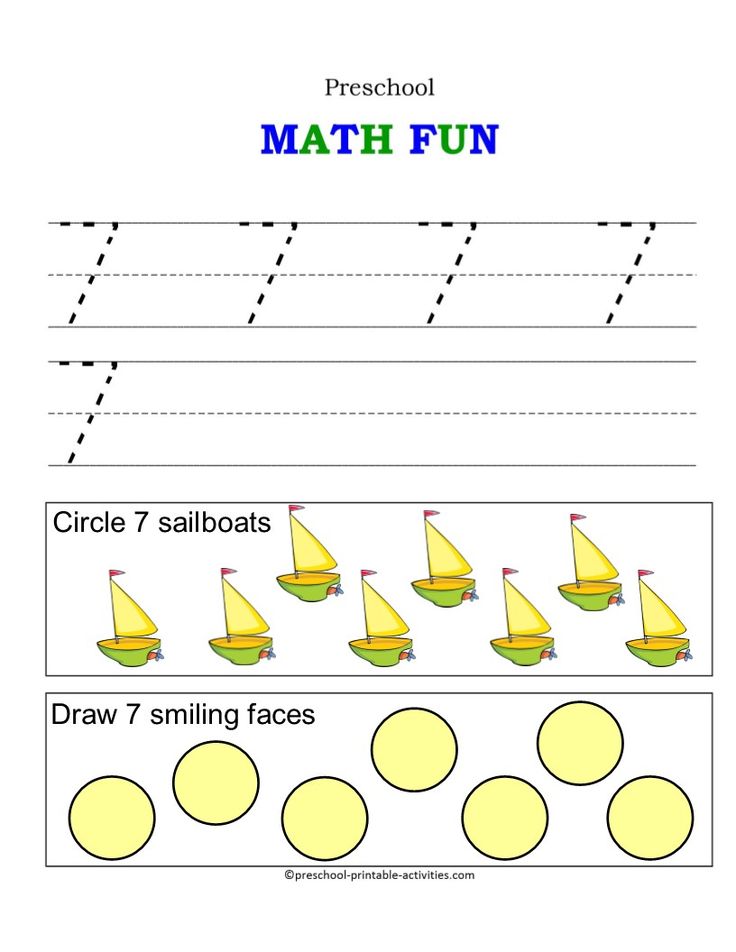
- Do you remember what goal we set at the beginning of the lesson?
- How many sense organs does a person have?
- What question do you have to answer me?
- Can we call the sense organs our helpers? Prove it.
- Look at our little man. What can you say?
The result of the lesson:
Teacher: So our lesson is over. Thank you for your work.
- Raise your hand, who is pleased with himself, because he was active and everything worked out for him.
- Raise your hand, who thinks that he is not yet successful, and he will definitely try in the next classes.
Children achieved the goals set at the beginning of the lesson. We received the finished product - a person similar to us.
Implementing a system-activity approach in the lessons of the world around us, we were convinced that research makes the process of cognition more productive.
Self-analysis of the lesson “Our helpers are the sense organs”.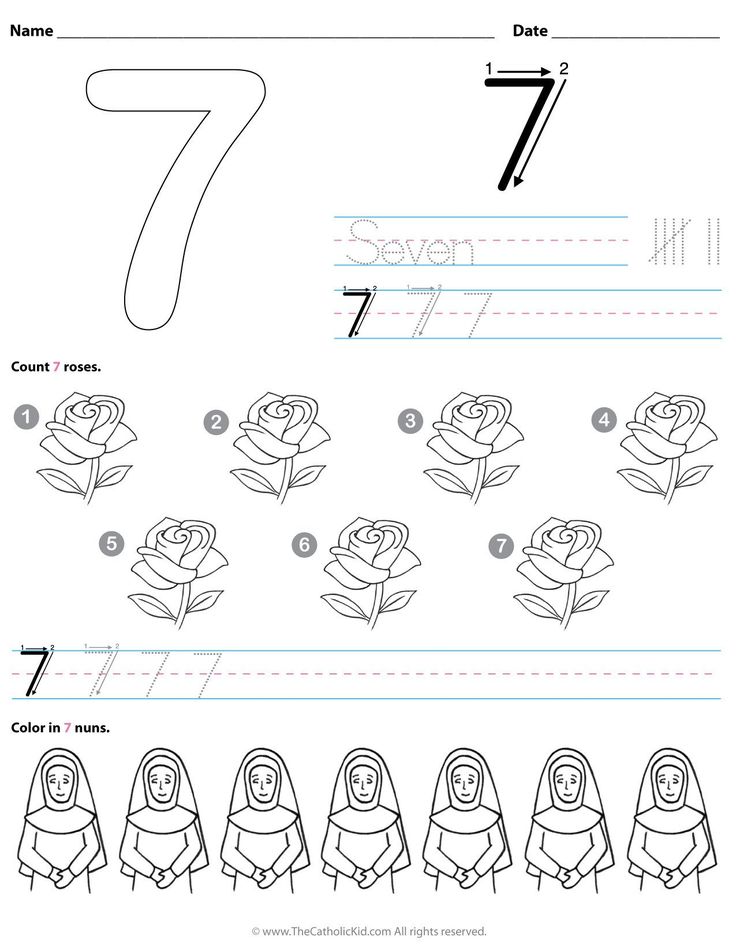
- This lesson belongs to the lesson - acquaintance. This lesson is held in the section: "Wildlife". Subsequently, the acquired knowledge will be used when considering the topics of the next classes and in later life.
- This lesson reflected all the requirements of the program "The World Around Us" on this topic. The children were active throughout the session. Increased activity of children was observed when performing experimental and practical activities. Due to the constant change of activities, cognitive interest was maintained throughout the lesson. In the course of the lesson, the concept was studied and consolidated - the sense organs, the ability to highlight the features of each sense organ, their differences.
- At the lesson, various types of teacher's activities took place: a survey, conversation and identification of the existing knowledge of children on this topic. Organization of joint activities of children, conducting physical. minutes.
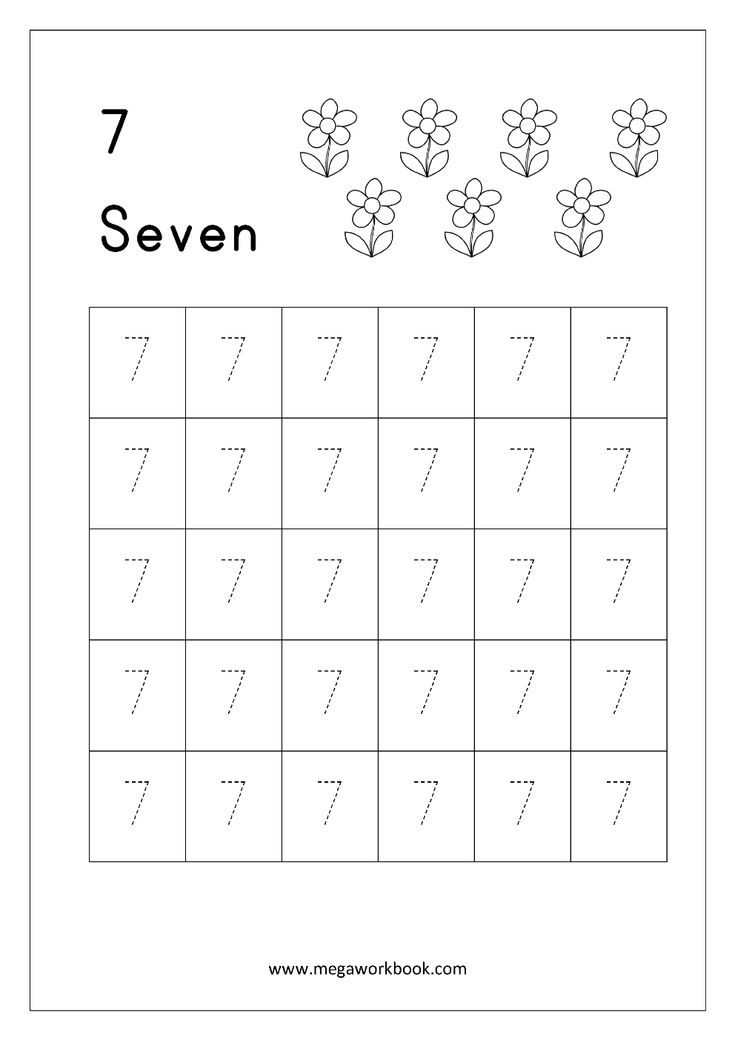 Implementation of practical work, research activities, independent work. Throughout the lesson, there was a fairly close relationship between the teacher and the children and a fairly friendly atmosphere between the students.
Implementation of practical work, research activities, independent work. Throughout the lesson, there was a fairly close relationship between the teacher and the children and a fairly friendly atmosphere between the students. - Throughout the lesson, the children were involved in basic mental operations: the children were thinking, comparing, researching.
- The educational possibilities of this lesson are quite large. the desire to help others, the ability to jointly perform tasks, confer, and discuss actions are brought up.
- The lesson was organized taking into account all sanitary and hygienic standards. The duration of the lesson is 25 minutes. Physical was carried out. minute.
- During the lesson, there were no deviations from the lesson plan. The teacher managed to solve the tasks and avoid overloading the students. The overall self-esteem of the teacher of this lesson is quite high.
References:
1. Blinova G.M. Cognitive development of children 5-7 years old.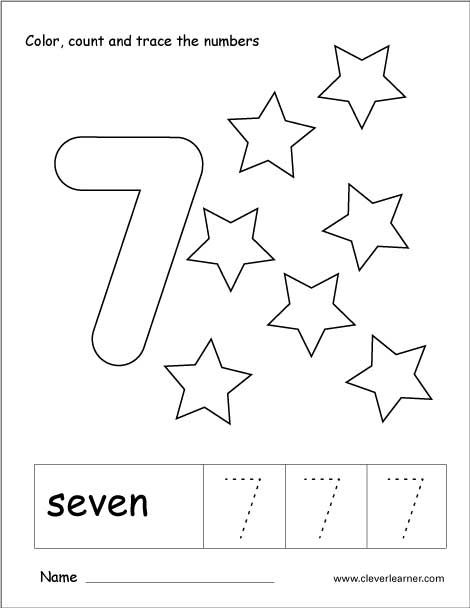 Toolkit. - M.: TC Sphere, 2009 (Together with children)
Toolkit. - M.: TC Sphere, 2009 (Together with children)
2. Dybina O. V., Rakhmanova N. P. Shchetinina V. V. The unknown is nearby: entertaining experiments and experiments for preschoolers. M.: TTS SPHERE, 2004.
Classes for preschoolers in preparation for school in Moscow, preparatory classes for school for preschoolers in the development center
A necessary condition for the baby to go to first grade with joy and willingness to learn is to write it down to classes for preschoolers preparing for school. Parents should not treat this approach as an unpleasant burden "imposed" by the modern education system. After all, the question is not whether the baby will learn to read and write sooner or later than others.
Preparatory classes for school are aimed primarily at the development of the child, the formation of his personality, the ability to acquire new knowledge, classify and analyze it. Also, work in a team. Preschoolers have great abilities, good memory - and it is important to give each child the opportunity to open up.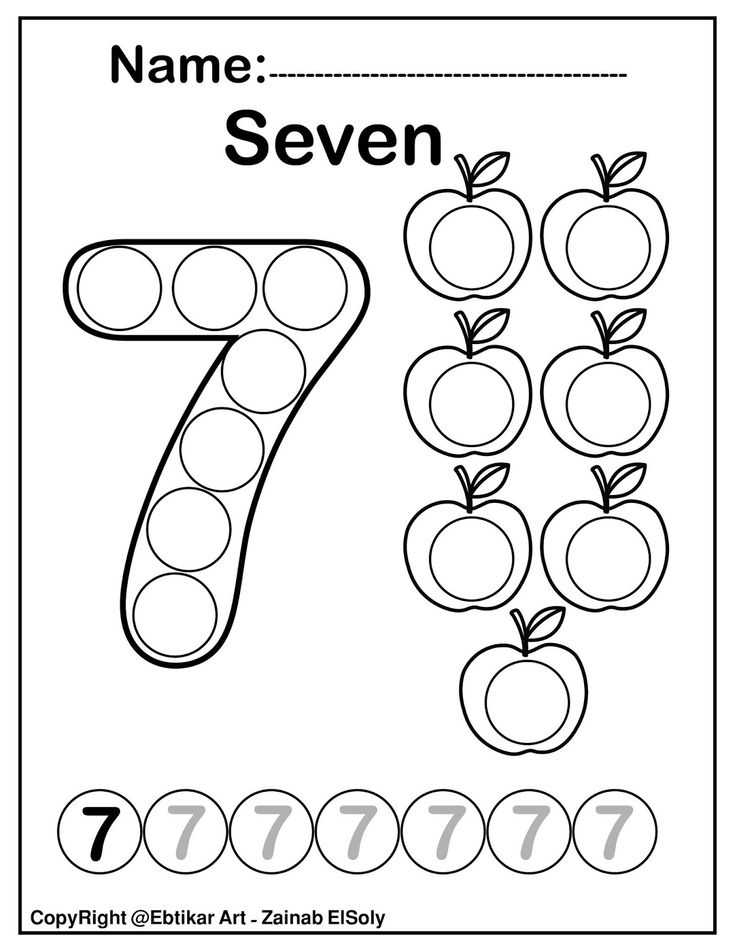 This is exactly how Montessori teachers work at the Constellation Children's Club. Preschool preparation for preschoolers begins at the age of 4 - of course, you can come to classes at an older age, at 5 or 6 years old. Depending on the age, temperament and character of the child, we will offer an effective program of group or individual lessons. A teacher, a psychologist and a speech therapist take part in the testing.
This is exactly how Montessori teachers work at the Constellation Children's Club. Preschool preparation for preschoolers begins at the age of 4 - of course, you can come to classes at an older age, at 5 or 6 years old. Depending on the age, temperament and character of the child, we will offer an effective program of group or individual lessons. A teacher, a psychologist and a speech therapist take part in the testing.
How is the preparation for school going? Classes for preschoolers last 1.5-2.5 hours, and during this time children have time to master many new concepts:
- Study a variety of Montessori materials;
- Play educational games;
- They learn mathematics and literacy in a playful way;
- Understand the structure of objects and phenomena.
How to start preparing for school
Any preschool preparation for school involves primarily the development of speech.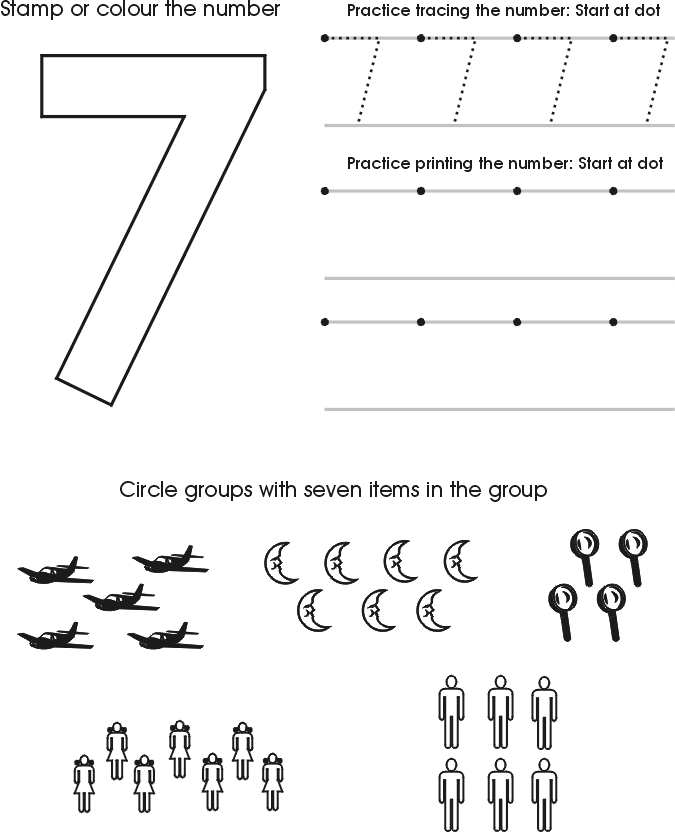 This is a big problem for today's children. The functioning of the speech center is inextricably linked with the development of fine motor skills. That is why Montessori classes can provide a real speech breakthrough. After all, we have created an ideal environment and materials. In the preparatory classes for school, children draw, sculpt, make applications and create amazing things. At our master classes, kids can cook soap or make a candle, paint glassware. Creativity is the beginning that must be supported and developed in every possible way.
This is a big problem for today's children. The functioning of the speech center is inextricably linked with the development of fine motor skills. That is why Montessori classes can provide a real speech breakthrough. After all, we have created an ideal environment and materials. In the preparatory classes for school, children draw, sculpt, make applications and create amazing things. At our master classes, kids can cook soap or make a candle, paint glassware. Creativity is the beginning that must be supported and developed in every possible way.
Learning English will be very useful. In our school preparation club, classes for preschoolers are held according to the unique methodology of Valeria Meshcheryakova. It allows the child to acquire a vocabulary of up to 500 words by the first grade. Children learn the language by ear, immediately operating with stable expressions. As a result, they confidently go to the first grade of a language school!
What a preschooler needs to know
Preparatory classes for school instill in the child the skills of analysis and classification, which means that the child will not get confused when solving logical tests and problems upon admission.